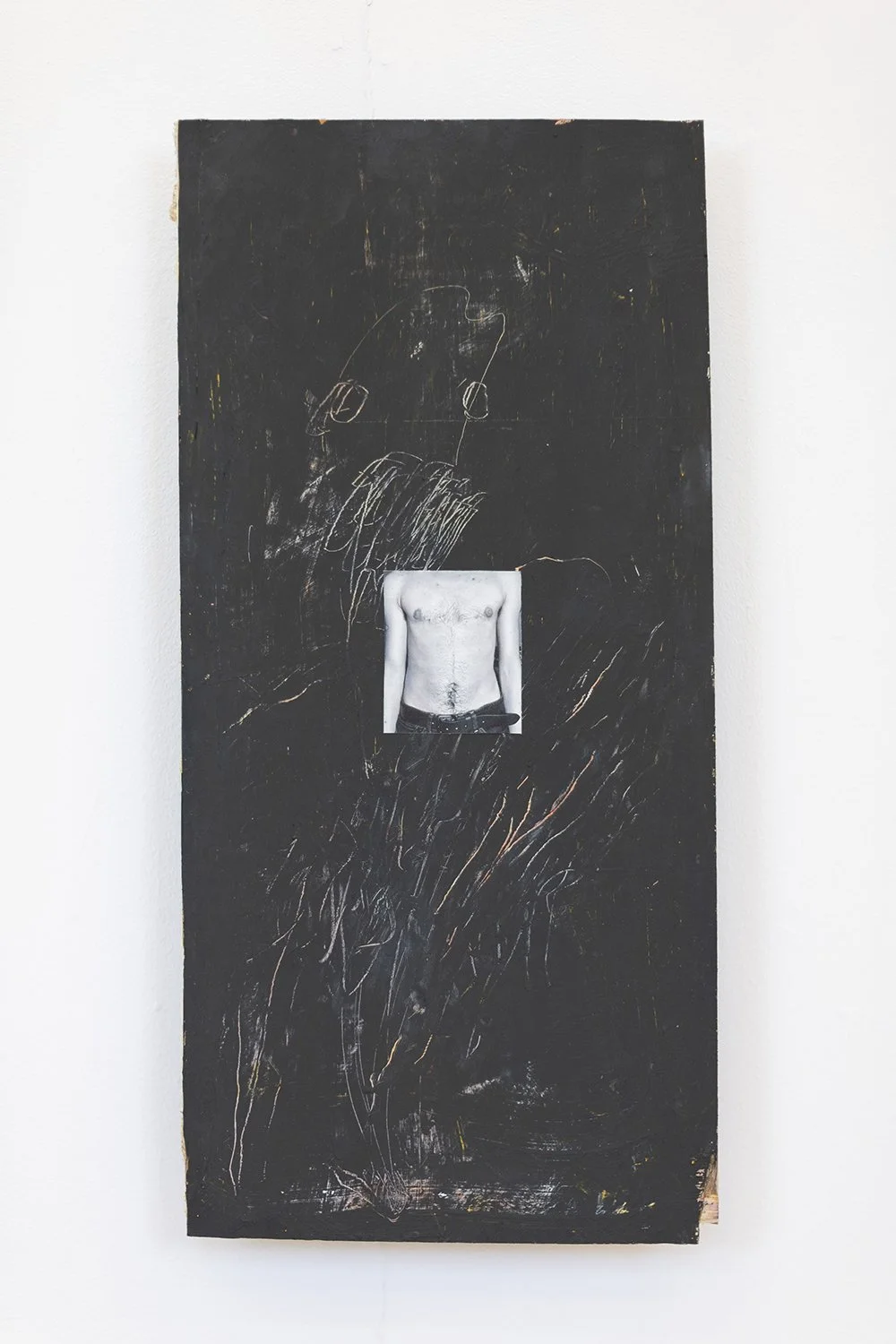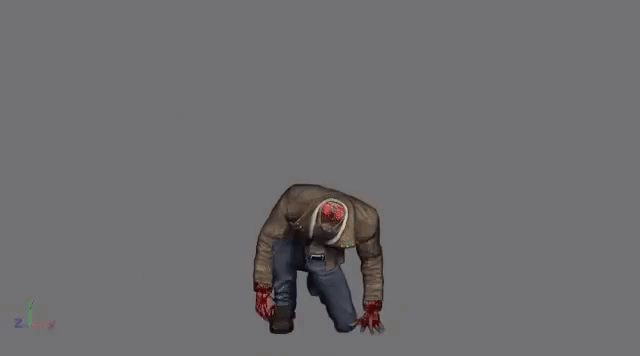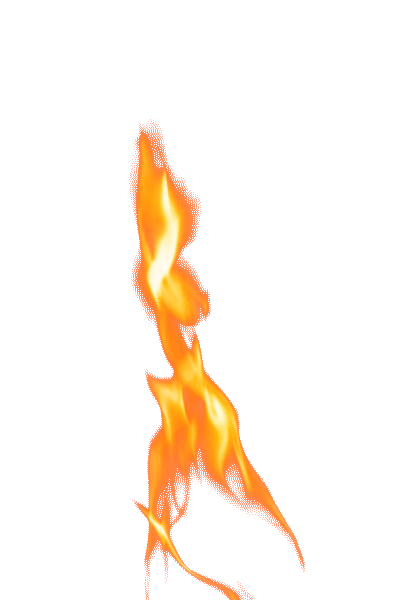Soft Territories: Crossing One (part ii)
Crossing One is the first iteration of Soft Territories, an experiment from Pup and Tiger, a queer-run art space in Canterbury, UK. As we prepare to open a physical space later this year, this dispersed launch appears across both Dennis Cooper’s and Delere Press. It is a curated split-site showcase exploring porous, overlapping practices.
For me there was something fitting in placing these works as an intervention within already living online spaces as a sort of teasing out or rewilding into existing habitats. It felt true to the spirit of Soft Territories, moving gently across platforms, not to claim space but to echo through it, to fold into what’s already there. I invited artists, and this is what emerged.
~ Jared
***
A recurring thread is the quiet merging of organic and synthetic forms. Folklore is retrieved and reinterpreted through queer embodiment. Personal desire, memory, culture, and identity filter through interfaces and gestures, whether sculptural, performative, or digital. These shared currents offer a way in, but they do not enclose the work.
The line between human and animal softens. Figures emerge that are part myth, part instinct, part echo, part longing, holding the strangeness of being many things at once, of remembering a wilder lineage. The work leaves space for divergence and contradiction, for the stray, the singular, and the speculative.
What binds these pieces is less a unifying theme than a shared willingness to inhabit the in-between, to remain porous to time, image, surface, and self.
Brandon J. Barnard, Arc (video still)
Somewhere between signal and story, Arc drifts across the moor like a thought half-remembered. Brandon J. Barnard’s video traces elemental markers: wind against grass, the glint of water, the orange husk of dried growth giving way to green. Created during a trip to Dartmoor guided by artist and folklorist Abigail Tinnion, the work emerges from prompts on portals, spirits, and spectral connections. Stone circles, tunnels of earth, offerings on cairns suggest a choreography of quiet thresholds. A figure appears, primal and indistinct. Impressions accumulate, atmospheric and unresolved, like the land is holding something just out of reach.
Created on a trip to Dartmoor under the guidance of artist and folklorist Abigail Tinnion, this work looks into the themes of time and places, portals, spirits, and electricity.
~ Brandon J. Barnard
Thomas Arnold, Chest
Thomas Arnold, Gravitating
To be queer and exist is to pose a persistent challenge to preconceived notions of what it is to be in the world, and consequently, our experiences often fluctuate between extremes of connection and loneliness, longing and comfort, fear and desire.~ Thomas Arnold
***
There’s something about softness that unsettles people. Maybe because it doesn’t give you anything to grip. It absorbs impact, rather than matching it. It holds contradiction without blinking. That’s not fragility; it’s technique. It’s survival. In these soft territories, artists are making maps out of memories, rituals, half-remembered instructions. They’re building worlds out of what’s been discarded, overlooked, or quietly stolen back.
Eb Lauren, Passing
Jacqui Adams, Herault
Jacqui Adams, Herault
i once imagined in you i had found a sort of twin,
who deigned to set me free by being good at
everything.and in that little window where i seemed special
to you,
any notion you believed was one i believed too.~ Jacqui Adams
We want to highlight work that does this: not work that represents identity in the expected ways, but that complicates it. Queer work that isn’t interested in explanation. Parallel work that isn’t looking for the centre. Art that stays in the room after the lights go out. If it’s neat, we’re suspicious. If it’s resolved, we’ve probably missed the point.
Jonathon Beaver, Constructs, Play
Jonathon Beaver, Distributed Craft Socials
Shruti Gaonkar, Indigo Darpan
Tethered parcels bound in indigo yarn cluster toward a shared point. From this nexus, a single pair of headphones stretches out, echoing the installation’s quiet gravity. Indigo Darpan (indigo mirror) threads together colonial history, banned theatre, and speculative protest. Taking cues from Dinabandhu Mitra’s 19th-century play Nil Darpan, Shruti Gaonkar refracts the legacy of British indigo exploitation in India into something both intimate and unresolved. The installation unspools its story not through linear narration, but through texture and tether, suggestion and stillness. The soundscape, developed in collaboration with UK-based artist Joe Hirst, functions as a spatial ghost, polyvocal and architectural. Together, they conjure a protest not yet past, where myth and record, violence and care, remain entangled.
Indigo Darpan (indigo mirror) speaks about the British Indigo planters exploitation in India in 1800's through the lens of a then banned play called 'Nil Darpan' (Indigo Mirror written by Dinabandhu Mitra). In the polyvocal narrative the layers of facts, fiction and myths are contested, stuck, peeled, torn and rebuilt.
~ Shruti Gaonkar
Dawn Woolley, Relics (grid)
They seem powerful. Made from different types of packing material, and beginning to show signs of age, these Relics are not sacred objects that are preserved for centuries because they are culturally significant. They are waste that cannot be destroyed. Like janus figures they reveal both sides of their nature: commodities to be worshipped and rubbish to be discarded, the sacred and the profane. They are relics of advanced capitalism: our legacy for future generations.
~ Dawn Woolley
This is an open and ongoing collection. It doesn’t follow deadlines or framing devices. It shows what artists are making, how they’re thinking, where they’re going. Whether the work is visual, time-based, text-driven, sound-oriented, or something that hasn’t quite been named yet, it’s present here. It surprises. It confuses a little. It doesn’t pitch a whole thesis, it simply shows where it’s working from.
Helen Grundy, Magic Mushrooms
Helen Grundy, Welfare to Warfare
Collage is an artform with recycling and repurposing at its core. I am interested in discard studies and themes around waste, trash and power systems. I am strongly influenced by punk culture and employ a DIY ethos of making something meaningful out of nothing. Currently I am making a series of Utopian works where I dismiss the dominant cultural vision of the future as apocalyptic and nihilistic and imagine a world where humans have worked together to make the world a better place for people, animals and nature with real social justice and freedom.
~ Helen Grundy
Thistle Morgan, Changelings
This body of work examines their experiences growing up as a working-class, Catholic, young, trans*, and neurodivergent individual. ‘Changelings’ critically engages with the societal expectations imposed on young people and the profound impact of a religious upbringing on queer youth.
~ Thistle Morgan
Selected works appear both online and in print, in dialogue with exhibitions, conversations, and whatever else unfolds. Nothing in this series is fixed. The format shifts in response to what takes shape. A soft structure for soft edges.
Vlad Cohen, Queer and Faithful Hound
Animals often appear in my work. They can be friendly and naive, but also strange or uncanny. I see them as both comforting and cautionary: eager for love but also abject. Mythological and occult references reveal that they inhabit an alternate and personal inner world.
I work mainly in ceramic stoneware, combining handbuilding with wheel-thrown forms, which I alter and decorate. I’m drawn to ceramic for its contradictions: practical yet precious, familiar yet refined. It’s both kitsch and cultured — a queer medium in its own right, reflecting many of the tensions I explore.
~ Vlad Cohen
Dennis Cooper, Zac’s Drug Binge (GIF novel excerpt)
Dennis Cooper, Zac’s Drug Binge (GIF novel excerpt)
I think the animated GIF is a super rich thing, mostly unintentionally? For the novel, I thought of them as these crazy visual sentences. But unlike text sentences, they do all the imaginative work for you. They render you really passive. They just juggle with your eyesight, and you’re basically left battling their aggressive, looped, fireworks-level dumb, hypnotizing effects to see the images and the mini-stories/actions they contextualize.
~ Dennis Cooper
Dylan Barr, Untitled (two heads)
In After Orion, Dylan Barr traces a quiet procession through sparse woodland, a masked figure carrying a sculptural rabbit through corridors of pine trunks and long fallen needles. The forest becomes a site of watchfulness and ritual, with tree trunks striping the frame and the ground littered with twigs and memory. The figure lays the forms down gently, then joins them on the forest floor, enacting something wordless and felt. For Barr, rabbits function as both symbol and companion, deeply personal and culturally resonant. They speak to survival, vulnerability, and the persistence of presence even in absence. After Orion moves gently through the edges of perception, where gestures hold what language cannot.
Ross Compton, Glorious Faggotry
Think of it: a radiant explosion of self-acceptance, where vulnerability, femininity and holding your hands a certain way isn't weakness. Wouldn’t that be nice? Wouldn’t that affect no one's life but your own? Well tough luck buttercup. Society doesn't like that shit. So cut the gay crap.
~ Ross Compton
Sebastian Rowlands, AH (After Hysterectomy)
We know this kind of work matters. Not because it fixes anything, but because it makes space. It opens something. It changes the air. And in a world already overstuffed with spectacle and certainty, softness can feel like a kind of resistance. A way of insisting that presence doesn’t always have to be loud to be real. That meaning doesn’t always need a caption.
Ryo Kajitani / 梶谷 令, Independence
The catalyst was a sudden experience of phantom pain in 2021, where a location of a past injury began to ache without warning. I had tried to live by disavowing my past, but when my body itself began to scream out, this body-led project was abruptly born. Its purpose is to confront the phenomenon of violence as a creator and, through a process of self-discovery, to sublimate trauma into a work of art …
The creative process begins with the restoration of documentary photos left on an old feature phone. I repair areas of damage and deterioration in the old photos, part by part as needed …
~ Ryo Kajitani / 梶谷 令
Rebecca Alford, Daylight
***
Soft Territories is curated by Jared Pappas-Kelley, artist, writer, and co-founder of Pup and Tiger. His past work has haunted places like Art Monthly, Cabinet, 3:AM Magazine, and The Rumpus, among others. His recent book Solvent Form: Art and Destruction was published by Manchester University Press, followed by the collection To Build a House that Never Ceased, with their newest, Stalking America, published by Delere Press. He’s written about ruins, disappearance, and the slippery nature of objects. Which feels relevant here. He’s also spent years building weird, independent spaces that didn’t last forever but mattered while they did. This is another one of those.
***
Soft Territories Crossing One / New Haunts: a conversation with Jared Pappas-Kelley (part 2)
The conversation continues here in the second half of the interview between Jonathan Mayhew and Jared Pappas-Kelley, shared as part of Soft Territories: Crossing One, the opening showcase in a dispersed series curated by Pup and Tiger.
In this half, the discussion drifts further into shapeshifting identities, queer folkloric re-imaginings, and the porous thresholds between animal, myth, and machine. Jared reflects on art that doesn’t explain but lingers, attuned to the atmospheric and unresolved. There’s talk of changelings, capitalist relics, and hypnotic image loops, of works that operate in the cracks, slip across boundaries, and invite us to stay in the in-between. What unfolds is less a tidy theme than a constellation of shared urgencies, a space where memory glitches, identities shimmer, and the sacred flickers up through the synthetic.
***
Jonathan Mayhew: Neneh Cherry’s recent autobiography got me thinking about reforming a creative family and growing community again, something akin to her Sunday meals and parties with friends. A simple yet generous gift that puts us back in touch and gives space for conversations and nurturing ideas. It’s tied in with my revisiting of Donna Haraway’s Staying with the Trouble, and her idea of building community and kin in the times of the impending apocalypse (I’m still a little more hopeful) seems very pertinent and important, especially reconnecting with nature. Her Chthulucene considers the interconnectedness and the crucial role of non-human entities through the concept of tentacular thinking, invoking animality, landscape and also myth, which also touches on some other elements in Soft Territories. Could you delve into how these crossings speak to the idea of soft territory?
Jared Pappas-Kelley: Yeah, I’m interested in where that leads. Something about how these works feel like they’re not explaining, they’re just, in it. Migratory. There’s this amalgamation that happens, between human and animal, organic and synthetic, memory and matter. It feels very now. Folklore gets pulled into the frame but reinterpreted through queer passages or personal myth. Vlad Cohen’s ceramic figures, feel like they’ve wandered out of some strange internal terrain or bestiary. Dylan Barr does that in a different register, moving slowly through woodland. There’s a ritual logic there, but it’s private, unspoken. Or Ryo Kajitani as well, or like Shruti Gaonkar is doing it on a generational level. And somewhere in the background there’s Brandon Barnard’s Arc, just gliding through moorland and fog and stone circles, catching the flicker of something elemental. Not explaining, just observing. A kind of atmospheric divining.
I guess what binds it together, loosely, is a kind of willingness to stay in that in-between. That’s what I was seeing. These aren’t works trying to define, they’re just vibrating gently on the threshold. And maybe that’s the community part too. Not a fixed group or a clear manifesto, but a shared willingness to stay with the trouble, as Haraway would say. To keep listening at the edges. Even something like Dawn Woolley’s Relics, these remnants of packaging and capitalist debris, they start to feel sacred, like waste made mythic. The line slips. It all feels like a long forgetting and remembering at once.
And then there’s Dennis Cooper’s take on the GIF novel, this visual sentence that loops endlessly, pulling you in and holding you captive. It’s hypnotic but also kind of aggressive, a perfect metaphor for how these images grab us and won’t let go, how meaning slips. It’s that tension between passivity and overload, between story and signal.
JM: Sounds like there’s some really beautiful works at play here, operating in those cracks is a good place to be. Forgetting where we came from is what will get us back into trouble in the future as well now. Building spaces and places of community is an increasingly important thing we all need, with that in mind. What other kinds of events or uses of the space do you envisage in the future of Pup and Tiger?
JPK: We have always imagined it as a shapeshifter. Right now we are online and popping up in other places but we are working toward a physical space in Canterbury that can host exhibitions, readings, workshops, and serve as a social space. One of the pieces in the Delere showcase draws on the folklore of the “changeling”, reimagining it through a queer lens, not as something swapped or lost but as a way of being that slips between worlds and unsettles fixed identities. We have also talked about an expanded biennial of sorts, but in an unexpected way. For the art space there is an idea that people can come without feeling like they have to buy a coffee or understand art theory to be there. Something that feels like home or a glitch in the day.
JM: Unexpected art can be amazing! A little disruption in the world to make you stop and think or change your view of the space you’re in, my fave Félix González-Torres’ poster works come to mind as one example. That surprise experience can have some incredible ripple effects on people and is a great way to make that white cube space less scary to enter. I’m very excited to see this happen. In your wildest dreams where do you see Pup and Tiger in the future? What if you disrupted the art world entirely and moved into representing artists or expanded into something else altogether?
JPK: That’s the dream: to build something that could be a real alternative. Not in the sense of replicating the structures of commercial galleries but in supporting artists in ways that are not extractive. It’s important to have these networks in place, not just for dialogue but for sustainability. Artists need to be able to sell their work, to live and continue creating. Supporting artists in that way is something I really want to prioritise through Pup and Tiger. Maybe we do start representing artists or producing more publications. But I think it will always be a hybrid: part space, part platform, part interruption. We’re also relaunching Transmissions, a written series I first put together while editing Invert/Extant, and I’ve been developing it further with Jordan A. Rothacker. It’ll be coming under the Pup and Tiger umbrella soon, with a focus on writing and queer voices.
My wildest dream? Maybe Pup and Tiger has satellites, other small spaces, maybe even a residency or something more outward looking that gets inserted into the fabric of everyday life in unexpected ways. Something that haunts the edges of the art world rather than settling in its centre.
JM: Finally what are you up to yourself? Is there anything you’re reading, watching or listening to we should know about?
JPK: We just released a zine, I’ll put that information at the end, and I’m deep in the chaos of grant writing, fundraising, and getting ready to launch our physical space. It’s a lot, but it all feels part of the same project, trying to build something from all this. The nerdy answer, I’ve been immersed in the work of the artists in this showcase, so a lot of what I’ve been watching is their practice and processes. I also read Miranda July’s latest book not long ago. She might not know this but she’s secretly kind of my nemesis. Yeah July, you heard me. I wrote an essay years ago about how we came up in the same scene, same venues, and she and I even share our birthday. She’s totally unaware though, which keeps me entertained. On the music front, I’m mostly listening to low-tech, noisy, and lo-fi synth stuff and pretending it’s music. Somehow got lost in a lot of loud extremely slutty pop while doing mundane tasks so there's that as well.
JM: Haha ok I’m thinking we need to set up an Art Off between you and Miranda July, I’d pay to see the dance off section alone. I’m all about the slutty pop too, please send me links! Ok and finally what’s happening in Pup and Tiger right now?
JPK: We’re in the middle of launching Soft Territories, cough cough, our first split-site showcase between Dennis Cooper’s and Delere Press. It’s been wild and generous so far, artists from all over sending work that feels urgent and strange. We’ve also got our first zine out, Jumping Off, and are building toward opening a physical space in Canterbury. There will also be a zine publication for Soft Territories as well. Mostly, we’re trying to do something that feels like a gift to the people who find it. And maybe a little bit of a positive disruption to the rest.
If people want to find out more of what we are doing (and free copy of our new zine as well), they can sign up and keep updated here.
***
Jonathan Mayhew is an artist and occasional writer based in Dublin Ireland. He has recently had solo shows in Sports Hall Window Helsinki and Pallas Projects in Dublin, and his work has been shown in the IMMA (the Irish Museum of Modern Art Dublin), The National Gallery of Ireland Dublin, Crawford Art Gallery in Cork, The Library Project Dublin, the Bomb Factory London, and HIAP Helsinki. He has an upcoming project with Gorse Press in Ireland. He is mostly renovating a house right now but you can find his ghosts online.
Jared Pappas-Kelley is an artist, writer, and co-founder of Pup and Tiger. His past work has haunted places like Art Monthly, Cabinet, 3:AM Magazine, and The Rumpus, among others and he is the author of three books including Stalking America, Solvent Form: Art and Destruction, and To Build a House that Never Ceased. He’s written about ruins, disappearance, and the slippery nature of objects. He’s also spent years building weird, independent spaces that didn’t last forever but mattered while they did. All of which feels relevant here as we share a lot of crossovers in our interests and ideas of the nature on the unnatural things that haunt our world along with my background of working with and running small artists spaces in Dublin.






















